SpaceX’s Falcon Heavy Launch Brings Humanity One Giant Leap Closer To Mars

If you want to go where no one has gone before, you have to make the investment. Here’s what last week’s launch means.
If you want to send humans to Mars, and have them stay there for more than a couple of weeks, there are a number of challenges to overcome. You have to first land, successfully, a slew of equipment on the martian surface. You have to have that equipment self-assemble to create a shielded habitat, protecting any humans from the harsh radiation, dust storms, and extreme temperatures that pervade Mars. And you have to have enough of it so that when the humans arrive, they have the 6–18 months of supplies necessary to sustain them until they can make a return trip. An endeavor like this was previously estimated to cost $50–150 billion: a prohibitive number for getting to Mars with NASA’s current budget. But with the first successful SpaceX Falcon Heavy launch, sending humans to Mars might just become a reality.
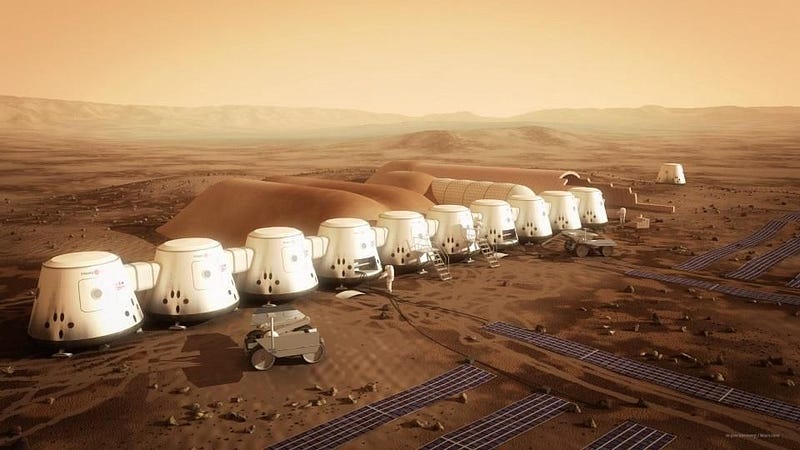
Since the 1980s, after the retirement of the Saturn V rocket and the beginning of the Space Shuttle era, one of the biggest challenges for Earth’s space program has been to send large payloads long distances. The situation becomes even more dire when we consider what it takes to land on the surface of another world; there’s a big technical leap from sending a satellite into orbit around a world and safely landing a spacecraft on a planet’s surface. While multi-ton satellites around Mars and off into deep space are commonplace, like Mars Reconnaissance Orbiter, Rosetta and Juno, we’ve never even landed a one-ton payload on Mars or a world beyond it. The Curiosity rover holds the record, and spectacular as it is, there’s no way a crewed mission could work with the same level of technology.
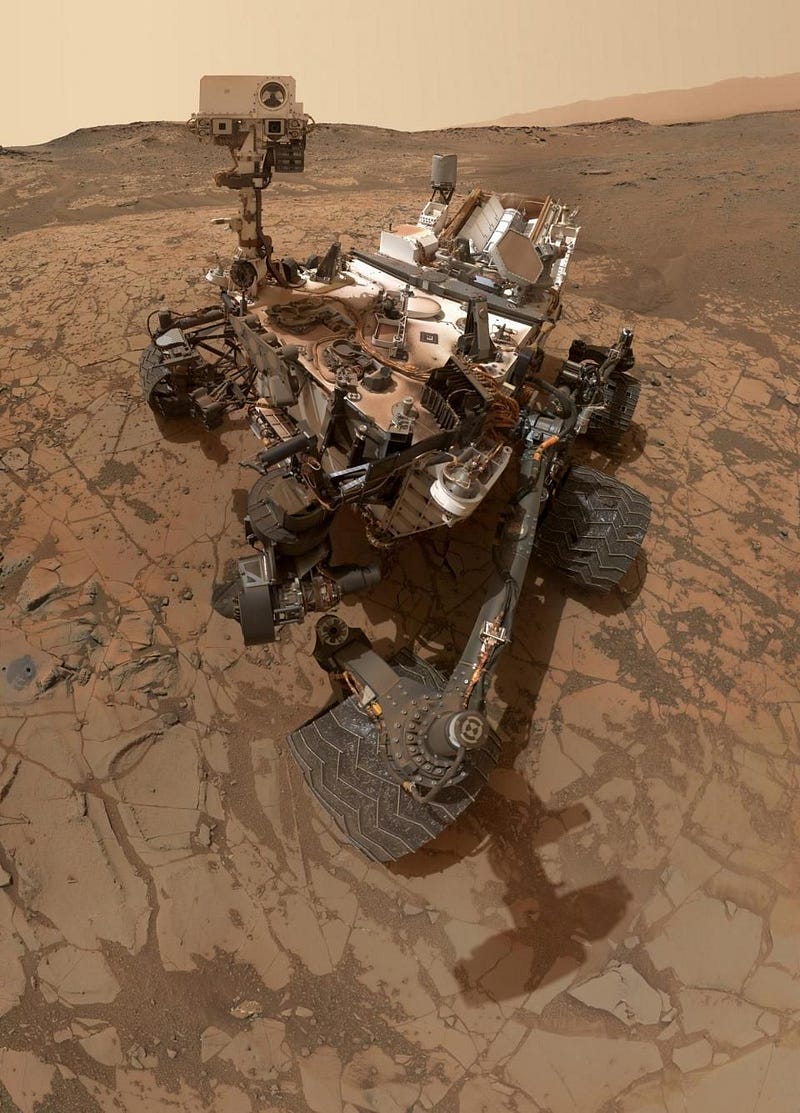
But this is where the dream of commercial spaceflight comes in. When we were launching Saturn V rockets, they were 3-stage behemoths. At 110 meters tall and weighing 3 million kilograms, the vehicle that brought humanity to the Moon was capable of taking up to 48,600 kg of mass beyond the gravitational bonds of Earth. But the cost of a single Saturn V launch was exorbitant: $1.16 billion per launch, with no reusable parts. The best commercial heavy lift vehicle, the 2-stage Falcon Heavy, is somewhat less impressive by comparison. It’s smaller (70 meters tall), lighter (half the mass of the Saturn V), and can only carry about a third as much mass: a payload of 16,800 kg.

However, the commercial Falcon Heavy has a huge advantage: cost. Instead of the $1,160,000,000 per launch of the Saturn V, a single Falcon Heavy launch costs a mere $90,000,000. With its engines built out of three Falcon 9 cores stitched together, it will be relatively easy to mass produce. And price-wise, that’s 7.8% the cost of a Saturn V launch; in other words, you can launch 13 Falcon Heavy rockets for the price of one Saturn V.
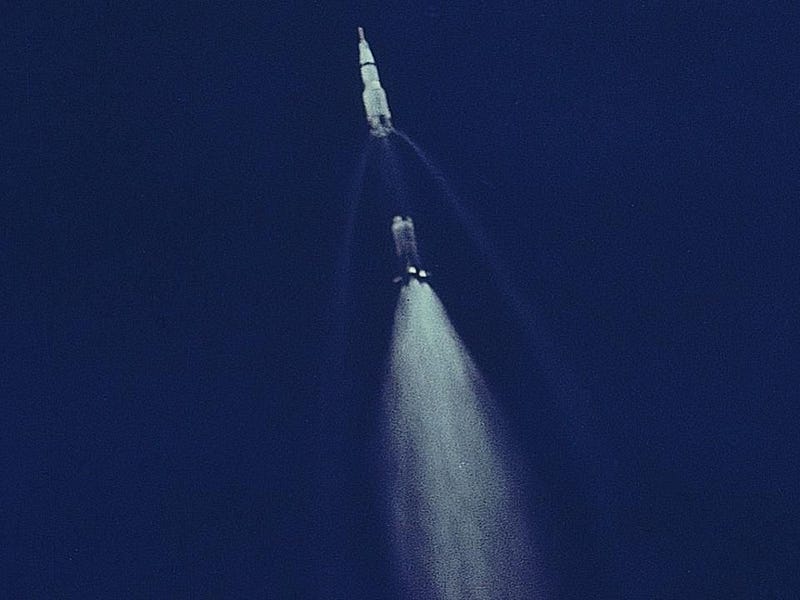
The first successful launch of the Falcon Heavy occurred on February 6, 2018, and was a spectacular demonstration of what the rocket is capable of. While it only went to low-Earth orbit, it’s quite capable of heading to geosynchronous orbits or even escaping Earth’s gravity, headed to the Moon, Mars, or even beyond. Best of all, both the first and second stages are capable of being fully recovered, with the heavy launch boosters successfully landing at Cape Kennedy on the Falcon Heavy’s first test launch. (Video below.)
https://www.youtube.com/watch?v=u0-pfzKbh2k
You’ll have to expend the central core to go to Mars, but that is an extremely small price to pay. The cost of launch has always been a fixed and spectacularly high one for any space-based mission. The farther you want to go into the Universe, the less you can take with you, as escaping from Earth’s gravity requires a tremendous expenditure of energy. For every kilogram of mass you want to send to another world, it costs you 63 million Joules of energy, meaning a full-loaded Falcon Heavy designed for launch to Mars would require a small atomic bomb’s worth of energy to get it there. That’s what’s happening with every rocket launch. Yet this time, we’ll recover the overwhelming majority of the rocket for reuse.

Going to Mars will still require a tremendous amount of investment, development, and a slew of obstacles to overcome. But the most prohibitive one has always been cost. The reason Mars timelines have always been pushed out to many decades is because, based on the current, paltry NASA budget, there simply isn’t enough money going into the agency to accomplish a grand mission like this in 10 years or less.
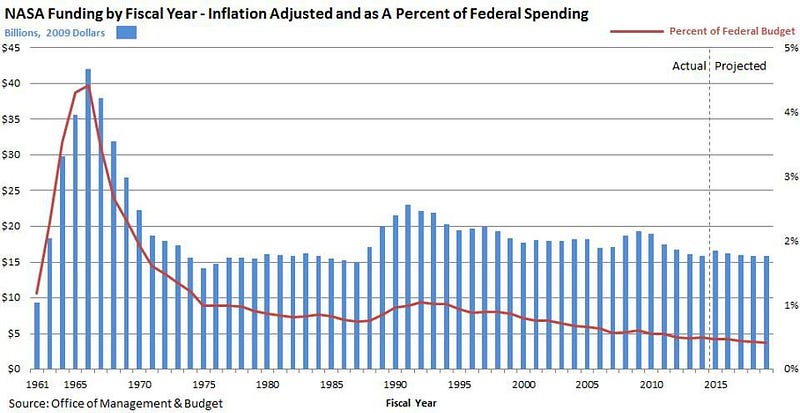
The Augustine Commission, seven years ago, claimed it would take an investment of $36 billion to build a heavy launch vehicle capable of taking humans to Mars. SpaceX did it for less than $2 billion. Watch its first success, here, anytime you like.
There are still a slew of obstacles to overcome when it comes to taking on the challenge of Mars. But the journey to another planet was always set to begin with a single launch. There were many naysayers out there to a commercial hand in the spaceflight industry, but NASA staked their hopes of future long-distance space missions on the idea of public-private partnerships. The successful launch, deployment, and recovery of the Falcon Heavy is the proof-of-concept that settles the issue. For a cost that looks to be lower than it’s ever been, Mars is within reach.
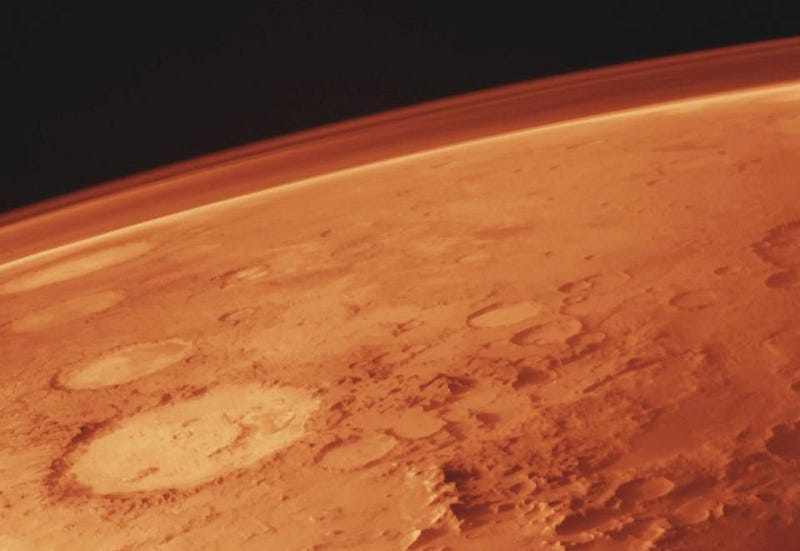
Mars appears in the pre-dawn skies right now, shining red and brilliant as it reflects the Sun’s light across the Solar System. Throughout the ages, the other planets have called out to us, beckoning our spirit of exploration and discovery. Until now, the argument for why we can’t go is that it’s too expensive, too dangerous, and that it would take too long to bring it to fruition. As the development and execution of the Falcon Heavy shows, those arguments are no longer valid. It will take a bold, new direction in leadership at the highest levels to bring us to Mars, but the planet with the most potential for life beyond Earth is now within reach. In 1961, Kennedy said the following, as he announced our plans to land humans on the Moon:
There is no strife, no prejudice, no national conflict in outer space as yet. Its hazards are hostile to us all. Its conquest deserves the best of all mankind, and its opportunity for peaceful cooperation many never come again.
Over half a century later, the opportunity is once again at our doorstep. Let’s not pass it up. The time to band together and go — to learn, to explore, to discover — for the benefit of all humanity, is now at hand.
Ethan Siegel is the author of Beyond the Galaxy and Treknology. You can pre-order his third book, currently in development: the Encyclopaedia Cosmologica.





